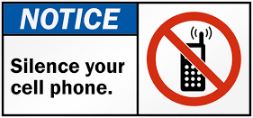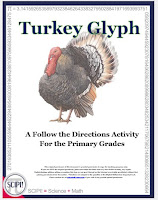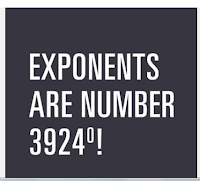
Most of us can't live
without our cell phones. Unfortunately, neither can our students. I
teach on the college level, and my syllabus states that all cell phones are to
be put on "silent", "vibrate", or turned off when class is
in session. Sounds good, doesn't it?
Yet, one of the most common sounds in today's classrooms is the
ringing of a cell phone, often accompanied by some ridiculous tune or sound effect
that
broadcasts to everyone a call is coming in. It’s like “technological
terror" has entered the classroom uninvited. Inevitably, this happens during an
important part of a lesson or discussion, just when a significant point is
being made, and suddenly that "teachable moment" is gone forever.
What are teachers to do?
Some instructors
stare at the offender while others try to use humor to diffuse the tension. Some
collect the phone, returning it to the student later.
A few have gone so far as to ask the student
to leave class.
In my opinion the use of cell phones during class time is rude
and a serious interruption to the learning environment. What is worse is the use of the cell phone as a cheating device.
The college where I teach has seen students
take a picture of the test to send to their friends, use the Internet on the
phone to look up answers, or have answers on the phone
just-in-case.
At our college, this is cause for immediate
expulsion without a second chance.
To avoid
this problem, I used to have my students turn their cell phones off and place
them in a specific spot in the classroom before the test was passed out.
Unfortunately, the students’ major concern
during the test was that someone would walk off with their phone.
Not exactly what I had planned!
 |
It's a CUTE sock and
perfect for a cell phone! |
A couple of years ago, a few of us in our department tried something new.
Each of us has purchased those long, brightly
colored socks that seem to be the current fashion statement.
(I purchased mine at the Dollar Tree for
$1.00 a pair.)
Before the test, each student had to turn off their cell phone, place it in the sock, tie the sock into a knot and place the sock in front of them.
This way, the student still had control over their cell phone and could concentrate on doing well on the test, and I did not have to constantly monitor for cheating.
At the end of the semester, we compared notes. Overall, we found that the students LOVED this idea.
Many said their students were laughing and comparing their stylish sock with their neighbor's. I was surprised that a few of the students even wanted to
take their sock home with the matching one – of course. So here is a possible side benefit....maybe
socking that cell phone away caused my students to
TOE the line and study!
-----------------------------------------------------------------------------
 |
| $2.25 |
Need more ideas for helping with those annoying classroom irritations? Here is resource that offers a number of practical and
realistic ideas about classroom management and how to eliminate those
day-after-day aggravating and annoying student problems that keep resurfacing
in your classroom. It is perfect for novice teachers, beginning teachers or for
student teachers. It is also a good review for those who have been teaching for
a number of years.
























